Innovative Surgical Glue Could Replace Sutures and Staples
|
By HospiMedica International staff writers Posted on 08 Aug 2017 |
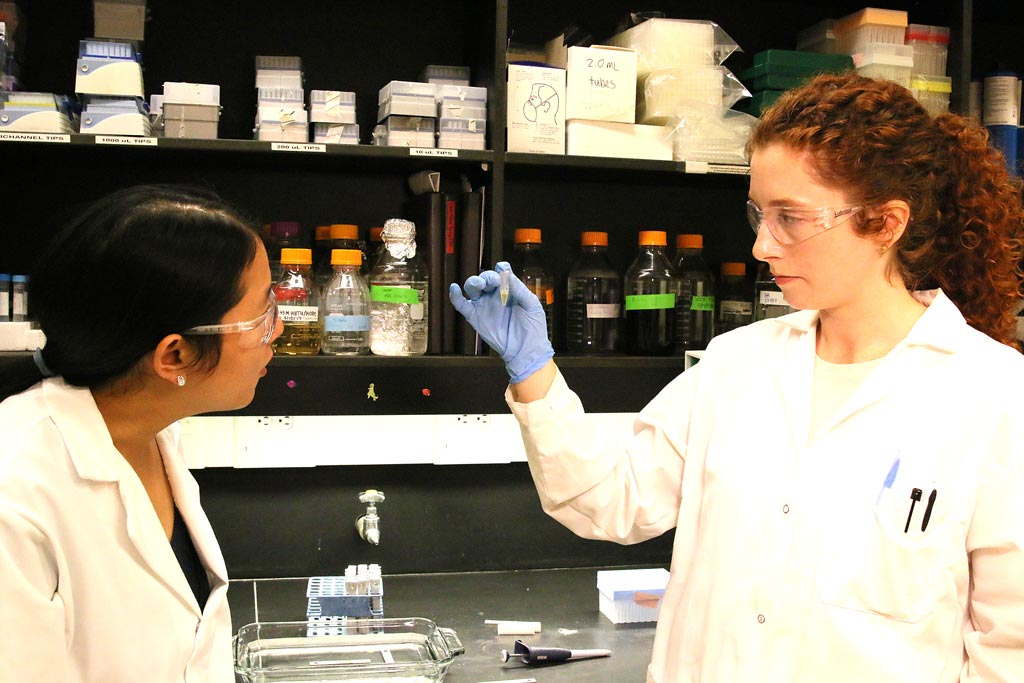
Image: Associate professor Julie Liu (L) and doctoral student Sydney Hollingshead prepare to test the new protein-based adhesive (Photo courtesy of Erin Easterling / Purdue).
Adhesive proteins produced by mussels could be the basis for bioinspired, non-toxic surgical glue for moist environments, according to a new study.
Developed by researchers at Purdue University (Lafayette, IN, USA), ELY16 glue is made of an elastin-like polypeptide (ELP) modified by adding the enzyme tyrosinase. The modification forms mELY16, in which the tyrosine residues are converted to 3,4-dihydroxyphenylalanine (DOPA), an adhesive molecule. Both ELY16 and mELY16 are not toxic to cells and work well under dry conditions; but modification with DOPA increases adhesion strength in highly humid conditions. The modified version can be tuned to varying environmental conditions and different tissue types.
ELPs have the innate ability to coacervate, which causes them to separate into two liquid phases, one denser and more protein-rich than the other, mimicking the adhesion mechanism used by sandcastle worms and mussels. According to the researchers, ELP, which can be produced in high yields from E. coli, can coacervate in response to environmental factors such as temperature, pH, and salinity. In laboratory tests, mELY16 has significantly higher adhesion strength in humid and underwater environments than commercially available fibrin sealants. The study was published in the April 2017 issue of Biomaterials.
“Our goal was to mimic the type of adhesion that mussel adhesive proteins have, and much other work has focused on the DOPA molecule as being critical to that adhesion,” said senior associate professor of chemical engineering and biomedical engineering Julie Liu, PhD. “When the adhesive materials were exposed to large amounts of moisture, proteins containing DOPA had a much higher adhesion strength compared to unconverted proteins containing only tyrosine. So, DOPA conferred much stronger adhesion in wet environments.”
Elastin is a highly elastic protein found in connective tissues that allows them to resume their shape after stretching or contracting, for example in skin. Elastin serves an important function in arteries as a medium for pressure wave propagation to help blood flow, and is particularly abundant in large elastic blood vessels such as the aorta. Elastin is also very important in the lungs, helping them to contract, and in elastic ligaments and cartilage, where it helps store mechanical energy for load-bearing muscles.
Related Links:
Purdue University
Developed by researchers at Purdue University (Lafayette, IN, USA), ELY16 glue is made of an elastin-like polypeptide (ELP) modified by adding the enzyme tyrosinase. The modification forms mELY16, in which the tyrosine residues are converted to 3,4-dihydroxyphenylalanine (DOPA), an adhesive molecule. Both ELY16 and mELY16 are not toxic to cells and work well under dry conditions; but modification with DOPA increases adhesion strength in highly humid conditions. The modified version can be tuned to varying environmental conditions and different tissue types.
ELPs have the innate ability to coacervate, which causes them to separate into two liquid phases, one denser and more protein-rich than the other, mimicking the adhesion mechanism used by sandcastle worms and mussels. According to the researchers, ELP, which can be produced in high yields from E. coli, can coacervate in response to environmental factors such as temperature, pH, and salinity. In laboratory tests, mELY16 has significantly higher adhesion strength in humid and underwater environments than commercially available fibrin sealants. The study was published in the April 2017 issue of Biomaterials.
“Our goal was to mimic the type of adhesion that mussel adhesive proteins have, and much other work has focused on the DOPA molecule as being critical to that adhesion,” said senior associate professor of chemical engineering and biomedical engineering Julie Liu, PhD. “When the adhesive materials were exposed to large amounts of moisture, proteins containing DOPA had a much higher adhesion strength compared to unconverted proteins containing only tyrosine. So, DOPA conferred much stronger adhesion in wet environments.”
Elastin is a highly elastic protein found in connective tissues that allows them to resume their shape after stretching or contracting, for example in skin. Elastin serves an important function in arteries as a medium for pressure wave propagation to help blood flow, and is particularly abundant in large elastic blood vessels such as the aorta. Elastin is also very important in the lungs, helping them to contract, and in elastic ligaments and cartilage, where it helps store mechanical energy for load-bearing muscles.
Related Links:
Purdue University
Latest Surgical Techniques News
- Intravascular Imaging for Guiding Stent Implantation Ensures Safer Stenting Procedures
- World's First AI Surgical Guidance Platform Allows Surgeons to Measure Success in Real-Time
- AI-Generated Synthetic Scarred Hearts Aid Atrial Fibrillation Treatment
- New Class of Bioadhesives to Connect Human Tissues to Long-Term Medical Implants
- New Transcatheter Valve Found Safe and Effective for Treating Aortic Regurgitation
- Minimally Invasive Valve Repair Reduces Hospitalizations in Severe Tricuspid Regurgitation Patients
- Tiny Robotic Tools Powered by Magnetic Fields to Enable Minimally Invasive Brain Surgery
- Magnetic Tweezers Make Robotic Surgery Safer and More Precise
- AI-Powered Surgical Planning Tool Improves Pre-Op Planning
- Novel Sensing System Restores Missing Sense of Touch in Minimally Invasive Surgery
- Headset-Based AR Navigation System Improves EVD Placement
- Higher Electrode Density Improves Epilepsy Surgery by Pinpointing Where Seizures Begin
- Open-Source Tool Optimizes Placement of Visual Brain Implants
- Easy-To-Apply Gel Could Prevent Formation of Post-Surgical Abdominal Adhesions
- Groundbreaking Leadless Pacemaker to Prevent Invasive Surgeries for Children
- Spectroscopy Technique Improves Surgery for Pediatric Epilepsy Patients
Channels
Critical Care
view channel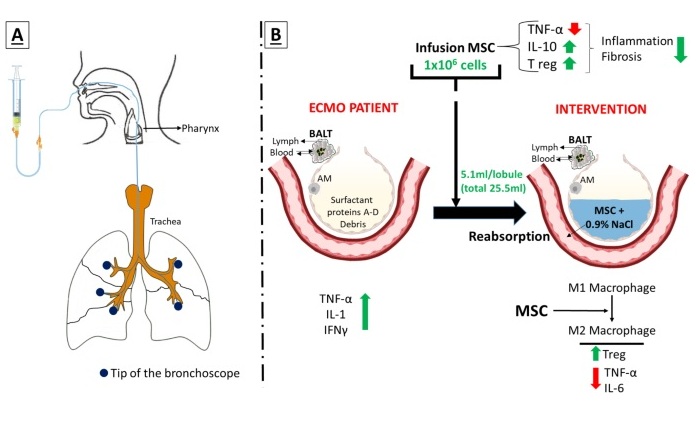
Novel Intrabronchial Method Delivers Cell Therapies in Critically Ill Patients on External Lung Support
Until now, administering cell therapies to patients on extracorporeal membrane oxygenation (ECMO)—a life-support system typically used for severe lung failure—has been nearly impossible.... Read more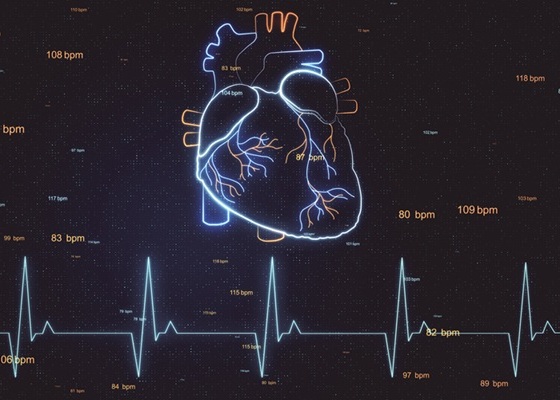
Generative AI Technology Detects Heart Disease Earlier Than Conventional Methods
Detecting heart dysfunction early using cost-effective and widely accessible tools like electrocardiograms (ECGs) and efficiently directing the right patients for more expensive imaging tests remains a... Read more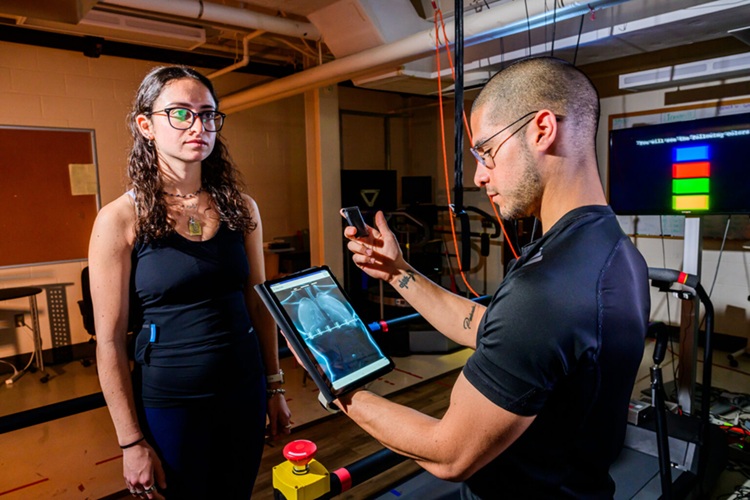
Wearable Technology Predicts Cardiovascular Risk by Continuously Monitoring Heart Rate Recovery
The heart's response to physical activity is a vital early indicator of changes in health, particularly in cardiovascular function and mortality. Extensive research has demonstrated a connection between... Read more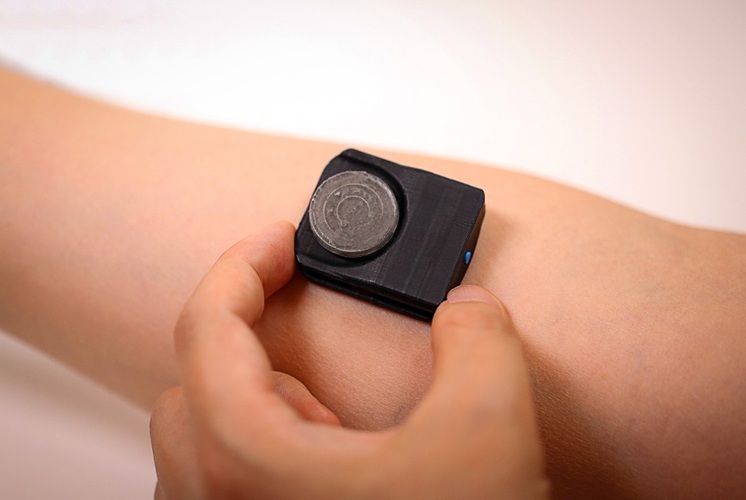
Wearable Health Monitoring Device Measures Gases Emitted from and Absorbed by Skin
The skin plays a vital role in protecting our body from external elements. A key component of this protective function is the skin barrier, which consists of tightly woven proteins and fats that help retain... Read morePatient Care
view channel
Portable Biosensor Platform to Reduce Hospital-Acquired Infections
Approximately 4 million patients in the European Union acquire healthcare-associated infections (HAIs) or nosocomial infections each year, with around 37,000 deaths directly resulting from these infections,... Read moreFirst-Of-Its-Kind Portable Germicidal Light Technology Disinfects High-Touch Clinical Surfaces in Seconds
Reducing healthcare-acquired infections (HAIs) remains a pressing issue within global healthcare systems. In the United States alone, 1.7 million patients contract HAIs annually, leading to approximately... Read more
Surgical Capacity Optimization Solution Helps Hospitals Boost OR Utilization
An innovative solution has the capability to transform surgical capacity utilization by targeting the root cause of surgical block time inefficiencies. Fujitsu Limited’s (Tokyo, Japan) Surgical Capacity... Read more
Game-Changing Innovation in Surgical Instrument Sterilization Significantly Improves OR Throughput
A groundbreaking innovation enables hospitals to significantly improve instrument processing time and throughput in operating rooms (ORs) and sterile processing departments. Turbett Surgical, Inc.... Read moreHealth IT
view channel
Printable Molecule-Selective Nanoparticles Enable Mass Production of Wearable Biosensors
The future of medicine is likely to focus on the personalization of healthcare—understanding exactly what an individual requires and delivering the appropriate combination of nutrients, metabolites, and... Read more
Smartwatches Could Detect Congestive Heart Failure
Diagnosing congestive heart failure (CHF) typically requires expensive and time-consuming imaging techniques like echocardiography, also known as cardiac ultrasound. Previously, detecting CHF by analyzing... Read moreBusiness
view channel
Expanded Collaboration to Transform OR Technology Through AI and Automation
The expansion of an existing collaboration between three leading companies aims to develop artificial intelligence (AI)-driven solutions for smart operating rooms with sophisticated monitoring and automation.... Read more















